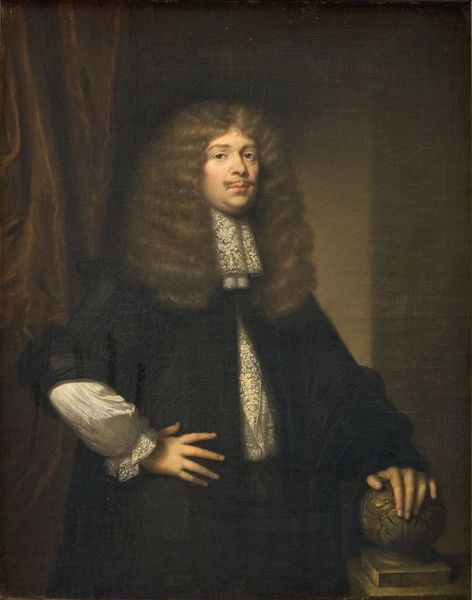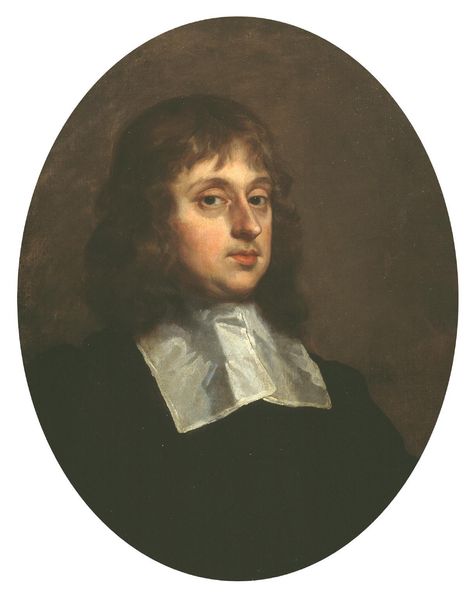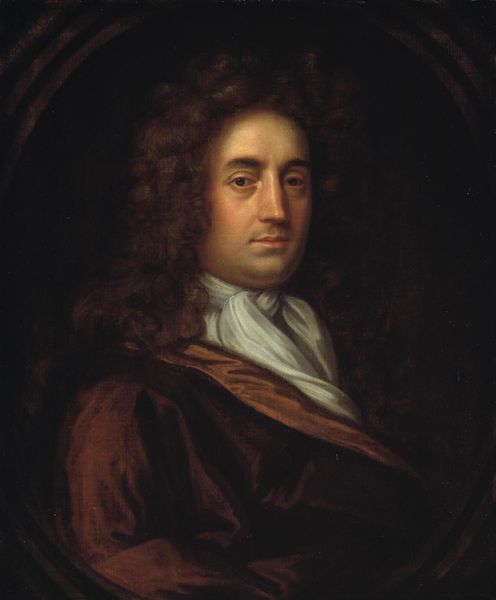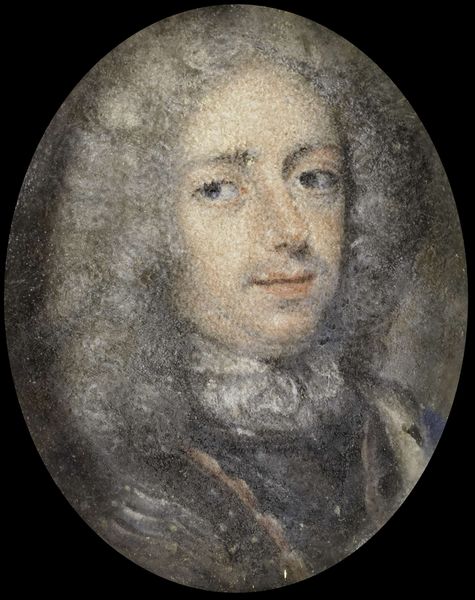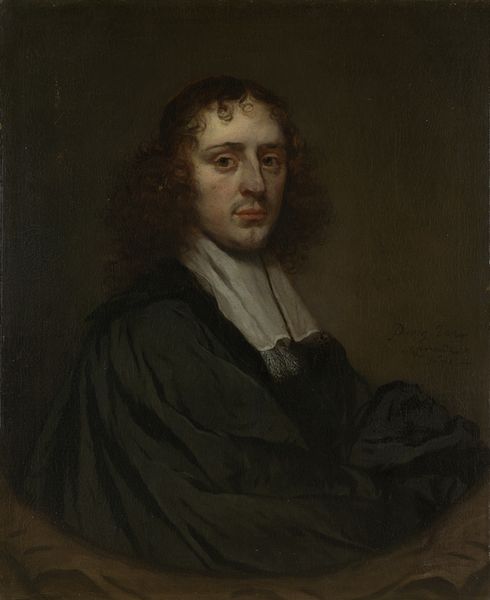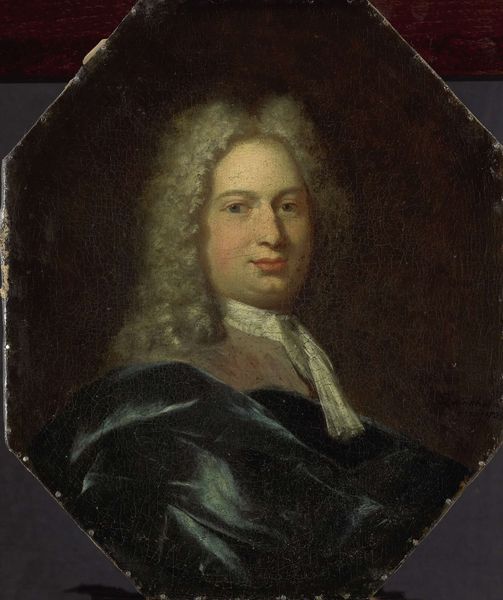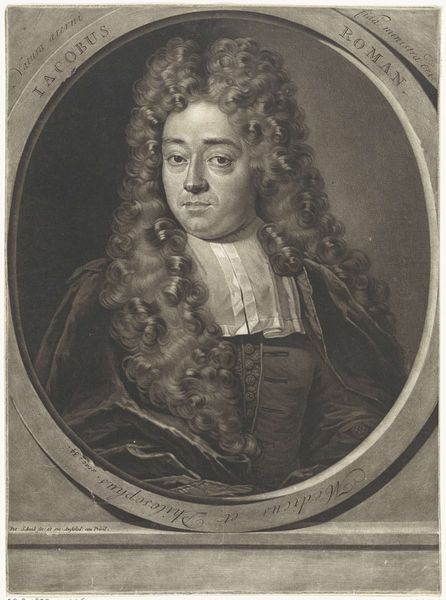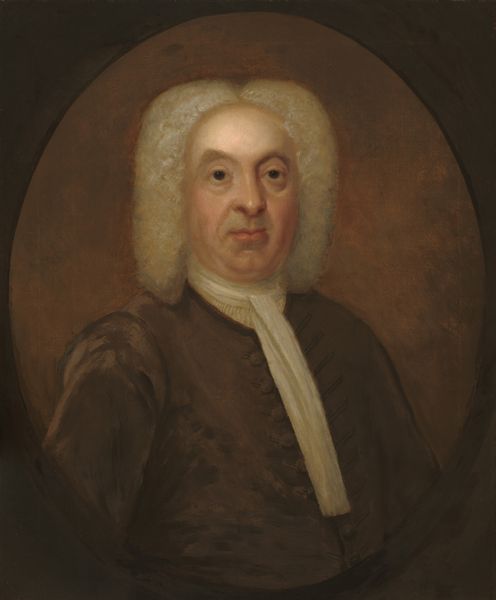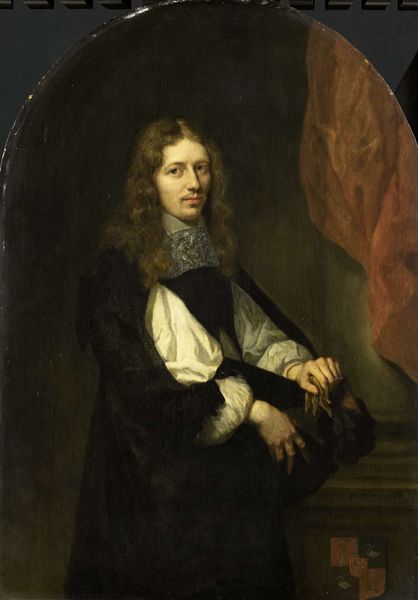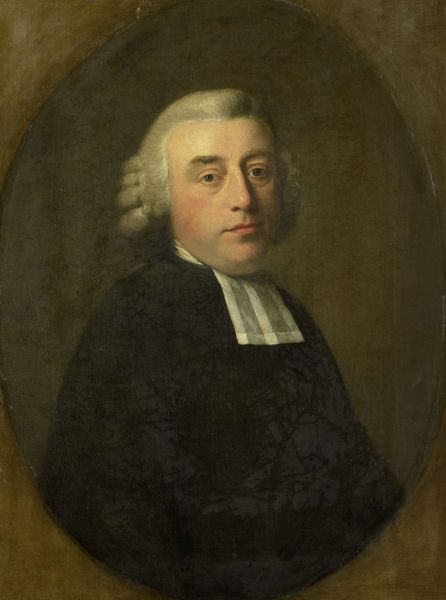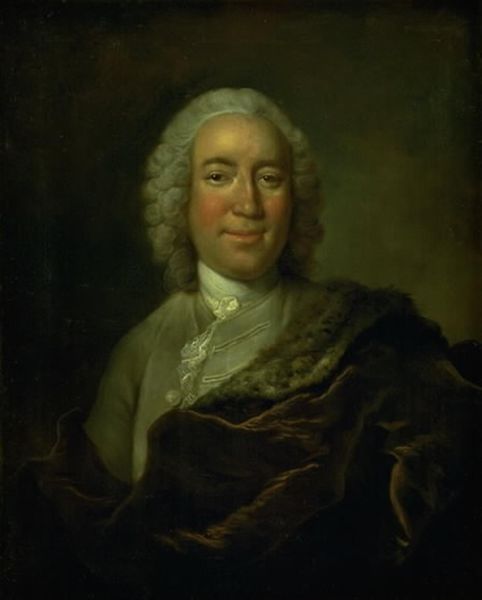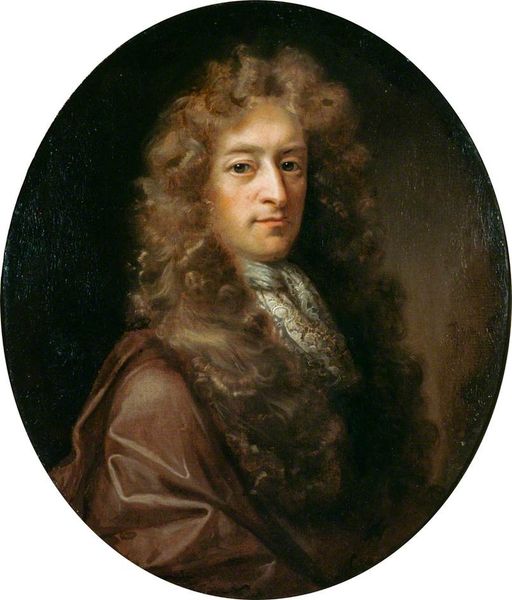
painting, oil-paint
#
portrait
#
baroque
#
painting
#
oil-paint
#
history-painting
#
academic-art
#
realism
Dimensions: height 27 cm, width 23 cm
Copyright: Rijks Museum: Open Domain
Curator: This is Caspar Netscher's "Portrait of Constantijn Huygens," an oil painting dating from 1672. What strikes you first about this piece? Editor: There's a certain austerity to it. The dark background, the somber clothing...it feels like a carefully constructed image of authority and perhaps intellectual gravitas. A symbol of power, but contained. Curator: Indeed. The black attire against the dark background amplifies that reading, doesn't it? Constantijn Huygens, of course, was more than just an authority figure. He was a poet, composer, scholar, and diplomat. His gaze seems knowing, almost melancholic. Netscher here employs classic portrait conventions to indicate Huygen’s persona, offering glimpses into inner depths of such an esteemed persona. Editor: Melancholy… yes, but also calculation. I see how the visual language presents him as both an intellectual and a man deeply involved in the political and social structures of his time. What do you think about his prominent placement within the oval frame, cutting through the somber dark background with high-key coloring around the face and collar? Curator: It's an interesting detail, isn't it? Ovals were popular choices in portraiture then, evoking a sense of completion, of a contained world. Placed in this setting and illuminated through stark high-key lighting, his gaze draws us to engage with a self-aware icon representing 17th-century Dutch cultural authority. It represents wholeness, which might tie to his multifaceted roles in society. His intellect contained, almost enshrined. Editor: Do you think the painting subtly enforces social and gendered expectations around men in positions of authority in the 17th century? A careful choreography meant to convey wisdom and power...perhaps masking a far more complex interior? Curator: Precisely. Netscher’s choice in portraiture, coupled with baroque influence, highlights societal power structures in portraiture, with Huygens representing the visual ideals of that hierarchy in subtle but deliberate ways. This approach in presenting authority—both aesthetically and politically—in the Dutch Golden Age highlights how even portraiture was part of an elaborate symbolic negotiation of status and identity. Editor: Well, seeing the detail within the construction of visual representation in relation to history offers new context to reflect on these kinds of established ideologies around authority. Curator: I agree completely; I now have a deeper appreciation for its symbolic sophistication and nuanced representation of character.
Comments
No comments
Be the first to comment and join the conversation on the ultimate creative platform.
